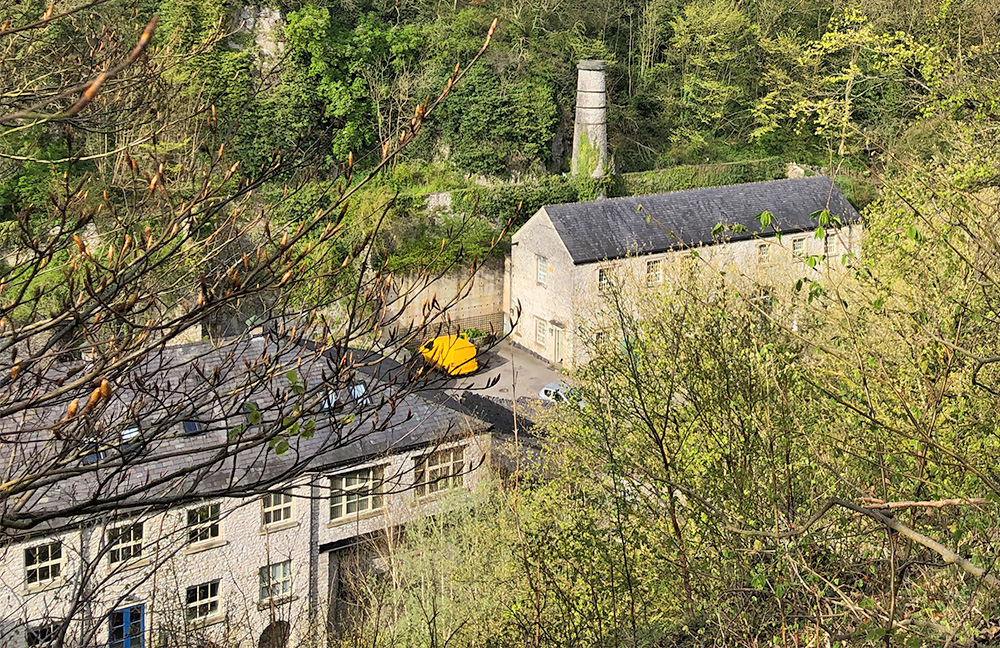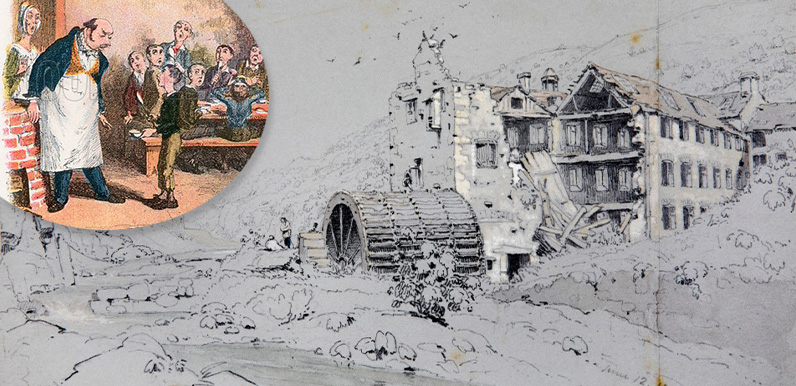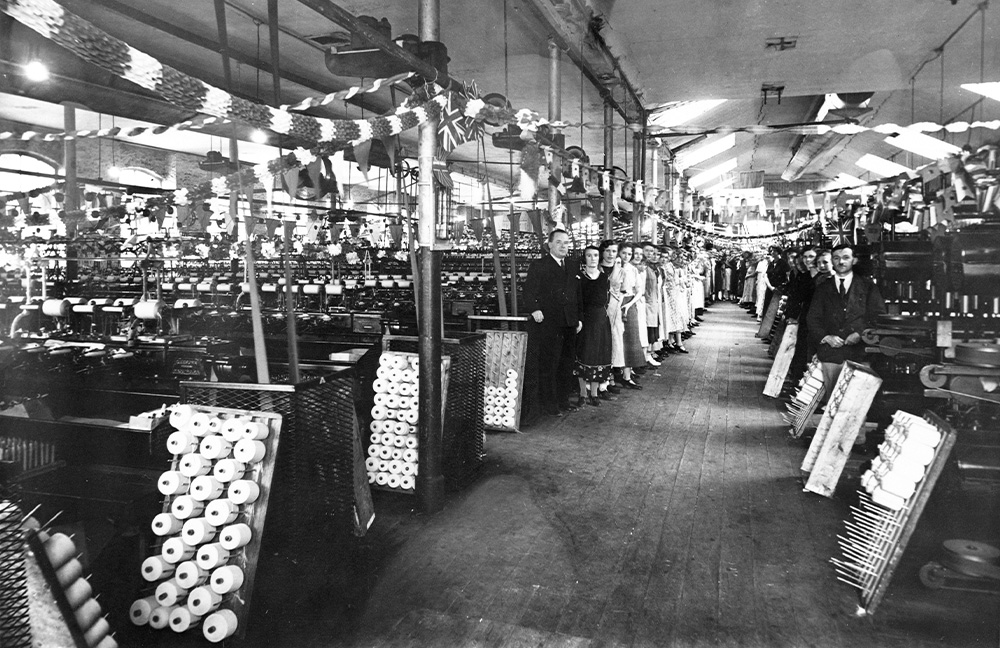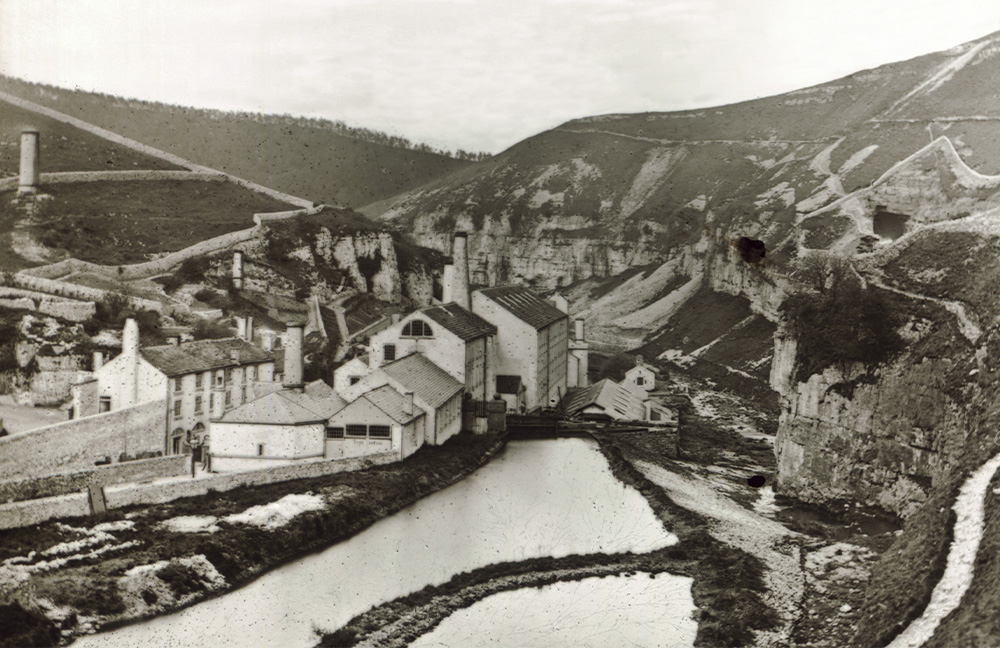Above: George Cruikshank’s original illustration showing Oliver Twist asking for second helpings, inset against an 1828 etching of the mill in ruins held in Buxton Museum.
Today, Litton Mill is a large building divided into attractive apartments set in tranquil surroundings beside the River Wye. But 250 years ago it was a very different picture – a failing cotton mill with a brutal reputation for exploiting and ill-treating orphan children forced to work long hours in dangerous conditions.
The cotton mill was built in 1782 by local farmers Ellis Needham and his cousin Thomas Frith, but soon ran into financial difficulties and was put up for sale just four years later, in 1786.
There weren’t any takers but Needham managed to persuade William Newton – who had had built Richard Arkwight’s first mill at Cressbrook in 1783 – to take a stake in the business for £200 if he would overhaul and maintain the machinery.

Above: A view of Litton Mill through the trees from the Monsal Trail with the apprentice house on the right.
Attracting labour was always a problem in such a remote spot. Needham took advantage of 17th century poor laws to take pauper children from cities as far away as London to work in the mill, housing them in an apprentice house he built in 1793.
Newton left Litton in 1797 to become an innkeeper but was declared bankrupt just three years later. By 1810 his fortunes had improved, and he became manager at nearby Cressbrook Mill, where it’s said that he introduced far better conditions for child workers.
Inspiration for Oliver Twist
Robert Blincoe was an orphan apprentice at Litton between 1803-14. His autobiography raised public awareness about the dreadful plight of children at the mill. It’s even said that he was inspiration for Charles Dickens’ Oliver Twist.
In 1815 Needham was declared bankrupt, leaving 80 of his apprentices destitute. And by 1828 the mill was in ruins (see etching at top of page). A fire in 1874 completely destroyed what remained.
Above: A rare photo taken inside the mill in 1935, showing it decorated for the Silver Jubilee of George V (click to enlarge). Courtesy of Alan Roberts.
Above: Taken around 1900, this photo shows the rebuilt Litton Mill with its mill pond. It’s just possible to see the entrance to Litton Tunnel on today’s Monsal Trail at top right (click to enlarge). Photo courtesy of Alan Roberts.
In 1893 Matthew Dickie purchased and rebuilt the mill to manufacture nylon yarn for hosiery. He also owned Cressbrook and created the road beside the Wye to connect both mills.
In 1934 Litton Mill was sold to Anglo-French Silk Mills to produce artificial silk and man-made fibres. It changed hands yet again in 1963 and made textured yarns until finally closing its doors in 1986. It then lay derelict until it was converted into apartments in 2003.
Above: Click the ‘Now’ button or drag the green slider to compare an early 1900s map with today’s satellite view. The purple arrow shows where the photograph above was taken. It’s just possible to make out the curved footpath across the mill pond on the map.



